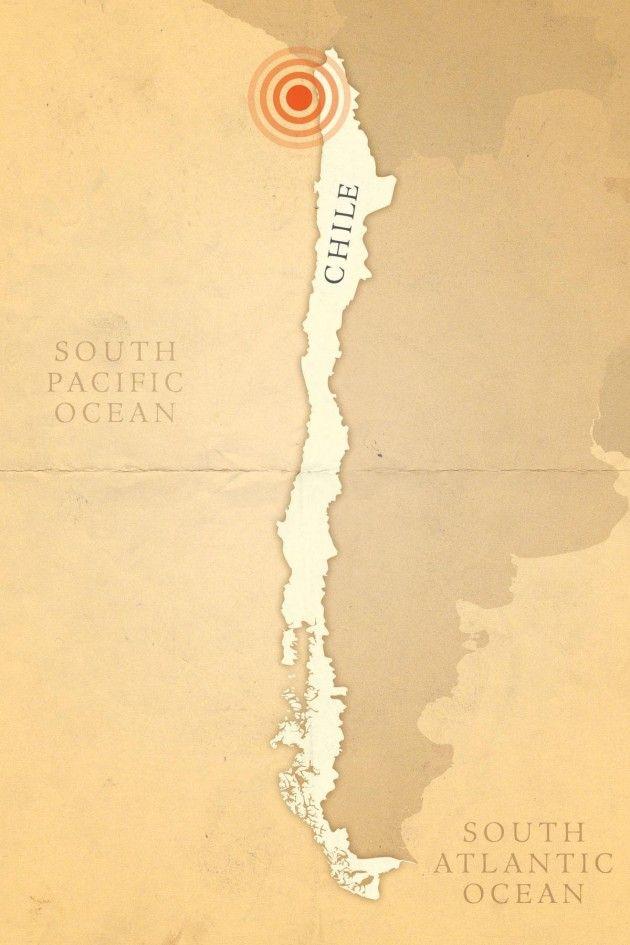An 8.2-magnitude earthquake struck off the coast of northwestern Chile on Tuesday, killing six and causing an eight-foot tsunami and the evacuation of coastal areas. The earthquake led to a 7.8-magnitude aftershock Wednesday night, the extent of which was not available at time of press.
Angie Van Boening, geology graduate student and instructor, said the earthquake was the result of stress and friction along the subduction zone between the Nazca and South American plates, near Chile.
“Chile has had some of the largest earthquakes in history,” Van Boening said. “It’s a really earthquake-
prone zone.”
Because of this frequency, earthquake safety is a topic of concern for the Texas A&M students who study abroad in Chili.
Lisa Tauferner, assistant director for the Study Abroad Program, said two students are in Chile currently but neither was near the area of the earthquake. Both, she said, were safe and accounted for. She said standard procedure when students are near a safety hazard is to keep in touch and keep them safe.
“For any students in or around the area [of a natural hazard], we either contact those students directly or, in this case, we were notified by their study abroad program provider directly before we got a chance to contact those students,” Tauferner said. “[The students] were already notified. All the home institutions for students who are studying abroad with them at the time said all the students with them were safe and accounted for.”
Eric Miller, senior international studies major, studied abroad in Viena Del Mar, Chile last semester. Although where he stayed was far from the site of Tuesday’s earthquake, he said Viena Del Mar is still located on the coast and is known to experience small earthquakes rather frequently.
“There were earthquakes while I was there,” Miller said. “They have them all the time. It’s really different from how we treat them and how they treat them. When there are small ones, where the ground just shakes a little, they don’t pay much attention to it. When there’s a big one like [Tuesday’s], it’s
more serious.”
Van Boening said the 8.2 rating on the moment magnitude scale represents the amount of energy released, the amount of shaking that happens on Earth’s surface, any offset of the ground and reports from local seismic stations. The most highly rated earthquake ever recorded was a 9.5 on the moment magnitude scale and occurred in Chile as well – in Valdivia in 1960.
“Any time you have subduction zones, you’re going to have a pretty big earthquake,” Van Boening said. “So far, that I’ve read, there have been a handful of deaths and a couple were the results of heart attacks from the stress and the others were from stuff toppling over and pinning them underneath. As far as I know there hasn’t been a lot of devastation.”
A positive to the location of the earthquake, Van Boening said, is that Chile has a good amount of experience with the natural hazard and has taken measures to prepare for any consequences.
“The good thing about Chile is that they tend to have fairly good construction as far as earthquake preparation goes,” she said. “It’s not like the Haiti situation [in 2010]. The building codes in Haiti are just terrible, because they don’t have the engineering to make earthquake-resistant buildings there. But a lot of places in Chile do.”
Miller said he and other students studying abroad were given instructions on what to do if a more severe earthquake occured.
“One of the first days I was there, [study abroad leaders] gave a short informational,” he said. “When at the university [during] a major earthquake, our instructions were to walk up the hills because the cities on the coast are really hilly. The school was right on the coastline, only a few feet above sea level, so we were supposed to walk up the hills and wait there if there was a tsunami warning.”
Aggies weigh in on Chilean earthquakes
April 3, 2014
Donate to The Battalion
Your donation will support the student journalists of Texas A&M University - College Station. Your contribution will allow us to purchase equipment and cover our annual website hosting costs.




















